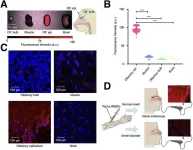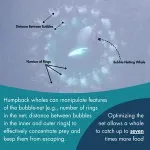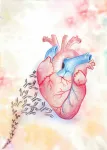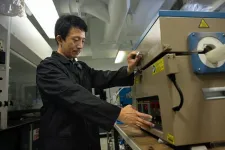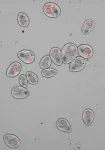Research shows that an estimated 13.3 million adults in the United States have a vast range of smell disorders and that 3.4 million endure severe hyposmia or complete anosmia. However, these studies were performed before the COVID-19 virus pandemic and therefore severely underestimate people currently with smell disorders.
“Despite the fundamental importance of the sense of smell in the quality of life and the high prevalence of anosmia, no objective, user-independent methods to assess the perception of smell is currently available either clinically or for use in human or research animal settings,” noted Dauren Adilbay, MD, assistant professor in the Otolaryngology/Head and Neck Surgery Department at the Medical University of South Carolina, in Charleston, South Carolina. “We sought to investigate a novel way to diagnose loss of smell using a special fluorescent imaging agent, Tsp1a-IR800P.”
Tsp1a-IR800P targets sodium channel 1.7 (Nav1.7), which plays a critical role in olfaction by aiding the signal propagation to the olfactory bulb. To determine the expression of Nav1.7, researchers conducted Tsp1a-IR800P imaging of mice with normal smell, mice with chemically-induced anosmia. Additional imaging studies were performed on olfactory epithelium tissues of non-human primates. Olfactory epithelium of COVID-19 infected hamsters and human cadavers of patients previously diagnosed with COVID-19 and succumbed to disease were also imaged.
Nav1.7 was found to be abundantly expressed in subjects with a normal sense of smell, while in subjects with anosmia the expression of Nav1.7 was significantly diminished, as shown by the fluorescence signal. Lowering of signal intensity that is proportional to the degree of damage was also noted, meaning that lower fluorescent emissions/signal may indicate loss of smell and that higher fluorescent emissions/signal may indicate treatment response and smell recovery.
Study authors noted that this fluorescent imaging agent has potential to be used in the physician’s office setting with an endoscope to diagnose smell disorders. It can also be immediately applied to preclinical studies in animal models (where objective and non-invasive tools do not exist) to evaluate the efficacy of pharmacological interventions that restore sense of smell and thereby aid in development of novel therapeutics.
“Early-stage detection of smell disorders can potentially lead to timely interventions that can treat the disease or minimize disease progression and thereby contributing to improved quality of life for the patients,” said Naga Vara Kishore Pillarsetty, PhD, professor in the Department of Radiology at Memorial Sloan Kettering Cancer Center in New York, New York. “This innovation could lead to the development of similar imaging agents for other sensory and neurological disorders, broadening the scope of molecular imaging.”
The authors of “NoninvasiveDiagnostic Method to Objectively Measure Olfaction and Diagnose Smell Disordersby a Molecularly Targeted Fluorescence Imaging Agent” include Dauren Adilbay, Department of Radiology, Memorial Sloan Kettering Cancer Center, New York, New York, and Department of Surgery, Memorial Sloan Kettering Cancer Center, New York, New York; Junior Gonzales, Sheryl Roberts, Tara D. Viray, and Raik Artschwager, Department of Radiology, Memorial Sloan Kettering Cancer Center, New York, New York; Marianna Zazhytska and Stavros Lomvardas, Mortimer B. Zuckerman Mind, Brain and Behavior Institute, Columbia University, New York, New York; Paula Demetrio de Souza Franca, Department of Radiology, Memorial Sloan Kettering Cancer Center, New York, New York, and Department of Otorhinolaryngology and Head and Neck Surgery, Federal University of São Paulo, São Paulo, Brazil; Snehal Patel, Department of Surgery, Memorial Sloan Kettering Cancer Center, New York, New York; Albana Kodra, Mortimer B. Zuckerman Mind, Brain and Behavior Institute, Columbia University, New York, New York, and Department of Genetics and Development, Columbia University Irving Medical Center, Vagelos College of Physicians and Surgeons, Columbia University, New York, New York; Jonathan B. Overdevest, Department of Otolaryngology—Head and Neck Surgery, Columbia University Irving Medical Center, Vagelos College of Physicians and Surgeons, Columbia University, New York, New York; Chun Yuen Chow and Glenn F. King, Institute for Molecular Bioscience, University of Queensland, St. Lucia, Queensland, Australia, and Australian Research Council Centre of Excellence for Innovations in Peptide and Protein Science, University of Queensland, St. Lucia, Queensland, Australia; Sanjay K. Jain, Center for Infection and Inflammation Imaging Research, Johns Hopkins University School of Medicine, Baltimore, Maryland, Department of Pediatrics, Johns Hopkins University School of Medicine, Baltimore, Maryland, and Russell H. Morgan Department of Radiology and Radiological Sciences, Johns Hopkins University School of Medicine, Baltimore, Maryland; Alvaro A. Ordonez, Center for Infection and Inflammation Imaging Research, Johns Hopkins University School of Medicine, Baltimore, Maryland, and Department of Pediatrics, Johns Hopkins University School of Medicine, Baltimore, Maryland; Laurence S. Carroll, Center for Infection and Inflammation Imaging Research, Johns Hopkins University School of Medicine, Baltimore, Maryland, and Russell H. Morgan Department of Radiology and Radiological Sciences, Johns Hopkins University School of Medicine, Baltimore, Maryland; and Thomas Reiner and Naga Vara Kishore Pillarsetty, Department of Radiology, Memorial Sloan Kettering Cancer Center, New York, New York, and Department of Radiology, Weill Cornell Medical College, New York, New York.
Visit the JNMwebsite for the latest research, and follow our new Twitter and Facebook pages @JournalofNucMed or follow us on LinkedIn.
###
Please visit the SNMMI Media Center for more information about molecular imaging and precision imaging. To schedule an interview with the researchers, please contact Rebecca Maxey at (703) 652-6772 or rmaxey@snmmi.org.
About JNM and the Society of Nuclear Medicine and Molecular Imaging
The Journal of Nuclear Medicine (JNM) is the world’s leading nuclear medicine, molecular imaging and theranostics journal, accessed more than 16 million times each year by practitioners around the globe, providing them with the information they need to advance this rapidly expanding field. Current and past issues of The Journal of Nuclear Medicine can be found online at http://jnm.snmjournals.org.
JNM is published by the Society of Nuclear Medicine and Molecular Imaging (SNMMI), an international scientific and medical organization dedicated to advancing nuclear medicine and molecular imaging—precision medicine that allows diagnosis and treatment to be tailored to individual patients in order to achieve the best possible outcomes. For more information, visit www.snmmi.org.
END
